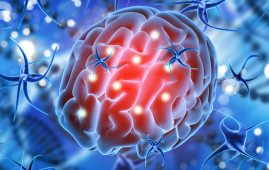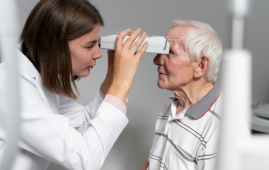

Despite the fact that hundreds of thousands of patients with atherosclerotic cardiovascular disease (ASCVD) are eligible for high-intensity statins, the majority do not use the medications, according to UT Southwestern Medical Center researchers. According to the study authors, the findings, published in Circulation: Cardiovascular Quality and Outcomes, show a significant gap between evidence-based drug guidelines and medical practice.
“Although statins are safe, generic, low-cost, and highly effective at lowering the risk of heart attack and stroke, less than 40% with atherosclerotic cardiovascular disease were on statins at the correct guideline-recommended intensity, and nearly 1 in 4 were on no statins at all,” said study leader Ann Marie Navar, M.D., Ph.D., Associate Professor of Internal Medicine in the Division of Cardiology and the Peter O’Donnell Jr. School of Public Health at UT Southwestern.
Nobel Prize-winning research by UTSW scientists Michael Brown, M.D., and Joseph Goldstein, M.D., both Professors of Molecular Genetics, in the 1970s led to the creation of statins, breakthrough medications that cut cholesterol levels in the bloodstream. This class of drugs, along with a few nonstatin lipid-lowering treatments (LLTs), are currently thought to be critical in reducing cardiovascular events linked with ASCVD, such as heart attacks and strokes. Most patients with ASCVD should be on high-intensity statins – 20 milligrams or more of rosuvastatin or 40 milligrams or more of atorvastatin – according to current guidelines. Patients who have consistently high LDL, or “bad,” cholesterol should also get nonstatin treatment.
Dr. Navar and her colleagues evaluated patient records from 92 health systems across the United States dating back to January 2017 to determine how closely doctors and patients adhere to these standards. They identified 322,153 patients diagnosed with ASCVD, with a median age of 69. Despite the fact that nearly everyone was eligible for high-intensity statin medication, just roughly 39% were receiving it. Approximately 37% were using a low- or moderate-intensity statin, while nearly 24% did not. Nonstatin LLTs were used infrequently, with only approximately 5% using one.
To test if this improved over time, the researchers reassessed lipid-lowering therapy in the same patients after one year. While 15% of those who were not on a statin and 13% of those who were on a low-intensity statin started using a high-intensity statin following follow-up visits, roughly 10% of those on high-intensity statins quit taking them. As a result, in one year, the total rate of high-intensity statin medication increased by less than 5%. The number of patients taking nonstatin LLTs remained stable.
Certain patient groups were more likely than others to be undertreated. People with atherosclerotic disease that did not include the heart, such as peripheral artery disease and past stroke, were less likely to use high-intensity statins than those with heart disease. Women and the elderly were also less likely to receive treatment.
Nonstatin lipid-lowering medicines such as ezetimibe and PCSK9 inhibitors may be appropriate for patients who cannot tolerate statins. Both have been demonstrated to help persons with ASCVD avoid heart attacks and strokes. The total rate of use of these drugs, however, was modest, with less than 5% of patients taking ezetimibe and less than 1% taking a PCSK9 inhibitor.
“This study captures a broad swath of patients who are actively receiving medical care,” said study senior author Eric Peterson, M.D., M.P.H., Professor of Internal Medicine, Vice Provost, and Senior Associate Dean for Clinical Research. “But even in this population, we demonstrate a high rate of statin nonuse and underdosing, and extremely low utilization of evidence-based nonstatin therapies for lipid lowering. This is clearly an opportunity to improve the quality of care for people with cardiovascular disease, in particular women and older adults.”
more recommended stories
 Brain Pulsations Linked to High BMI
Brain Pulsations Linked to High BMIAccording to a new study from.
 Brain Age Estimation: EEG Advancements in Neurology
Brain Age Estimation: EEG Advancements in NeurologyTo estimate brain age using EEG.
 Unlocking Ketogenic Diet for Epilepsy Management
Unlocking Ketogenic Diet for Epilepsy ManagementExploring the Therapeutic Potential of Ketogenic.
 Senescence in Neurons: Findings
Senescence in Neurons: FindingsBased on a new study by.
 Balanced Diet Linked to Enhanced Brain Health
Balanced Diet Linked to Enhanced Brain HealthDiet and brain health are strongly.
 Acid-Reducing Drugs Linked to Higher Migraine Risk
Acid-Reducing Drugs Linked to Higher Migraine RiskIndividuals who utilize acid-reducing drugs may.
 Atrial Fibrillation in Young Adults: Increased Heart Failure and Stroke Risk
Atrial Fibrillation in Young Adults: Increased Heart Failure and Stroke RiskIn a recent study published in.
 Neurodegeneration Linked to Fibrin in Brain Injury
Neurodegeneration Linked to Fibrin in Brain InjuryThe health results for the approximately.
 DELiVR: Advancing Brain Cell Mapping with AI and VR
DELiVR: Advancing Brain Cell Mapping with AI and VRDELiVR is a novel AI-based method.
 Retinal Neurodegeneration in Parkinson’s Disease
Retinal Neurodegeneration in Parkinson’s DiseaseBy measuring the thickness of the.

Leave a Comment